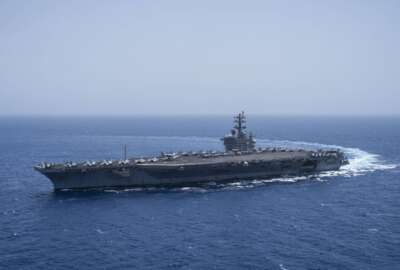NASA explores new uses for video teleconferencing
NASA is one of the federal pioneers of video teleconferencing systems (remember the first broadcasts from space?)…so it\'s no surprise that this agency\'s program...
NASA is one of the federal pioneers of video teleconferencing systems (remember the first broadcasts from space?)…so it’s no surprise that this agency’s program managers continue to rely on video conference technology to meet its daily demands for high-quality audio and visual communication among diverse public and private sector communities.
“At NASA, teams at varied locations need a way to engage in timely, technical conversations and collaborate remotely to meet mission-critical goals,” said NASA’s Deputy Chief Information Officer Deborah Diaz.
NASA — both Headquarters and its major centers around the country — uses video teleconferencing for everything from meetings, seminars, major international conferences and face-to-face meetings to quick conversations on pressing issues. The payoff is obvious: more cost-efficient and -effective operations, with savings on facilities as well as meeting planning and logistics.
At an Open Government Summit hosted by NASA in the fall of 2010, nearly 60 percent of the participants used electronic tools to “virtually attend” the summit. Organizers faced twin challenges of being efficient but also inclusive, while juggling video streaming, cooperative note-taking, online teleconferencing and adapting conversational practices in the room, to bridge the gap between physical and virtual participants.
What are they using? NASA Headquarters maintains video teleconferencing systems (ViTS) in multiple configurations, with equipment from vendors including Tandberg, Polycom and LifeSize. The typical ViTS stack includes the ViTS components themselves, additional recording units, PCs and in some cases SmartBoard capability. NASA is in the process of migrating all of its ViTS to have High Definition, digital sign control, and MP3 audio recording capabilities
Latest capability improvements include Flash and Windows Media Video streaming via the Web. Users who have a small portable streaming system can view transmissions via computer from anywhere in the world. Some configurations offer MP3 recording capability that lets NASA burn CDs to distribute audio recordings; in others, NASA can use full audiovisual recording capability to capture entire events on Digital Video Disc (DVD) or Blu-Ray.
NASA has begun implementing a Voice-Over-IP (VOIP) phone system, too. That will speed the delivery of IP-based desktop video conferencing as the agency phases out ISDN-based systems and will increase ViTS availability to NASA employees while reducing overall costs associated with equipment maintenance, operations, and logistics typical of larger ViTS facilities.
“Technology enables and supports one to thousands of conversations,” said NASA’s Chief Technology Officer for IT, Chris Kemp. “We’re finding that if we don’t stand in the way of that conversation, incredible things can happen.”
Copyright © 2024 Federal News Network. All rights reserved. This website is not intended for users located within the European Economic Area.





